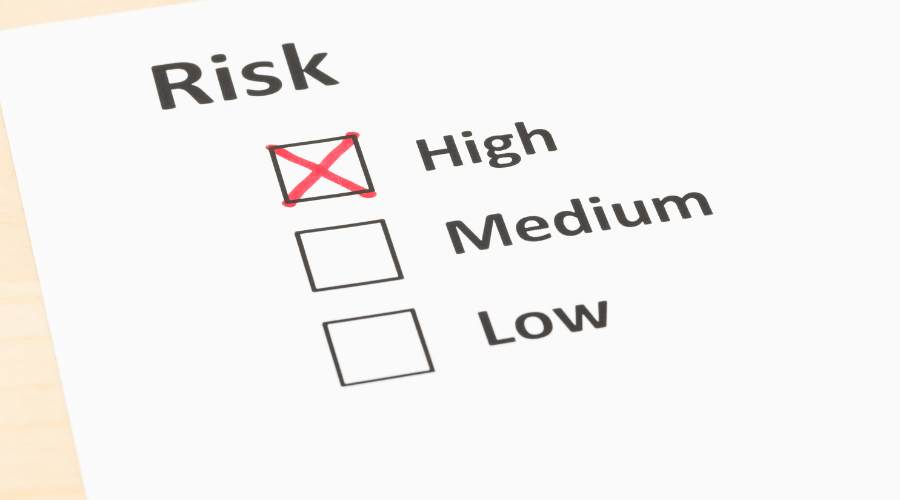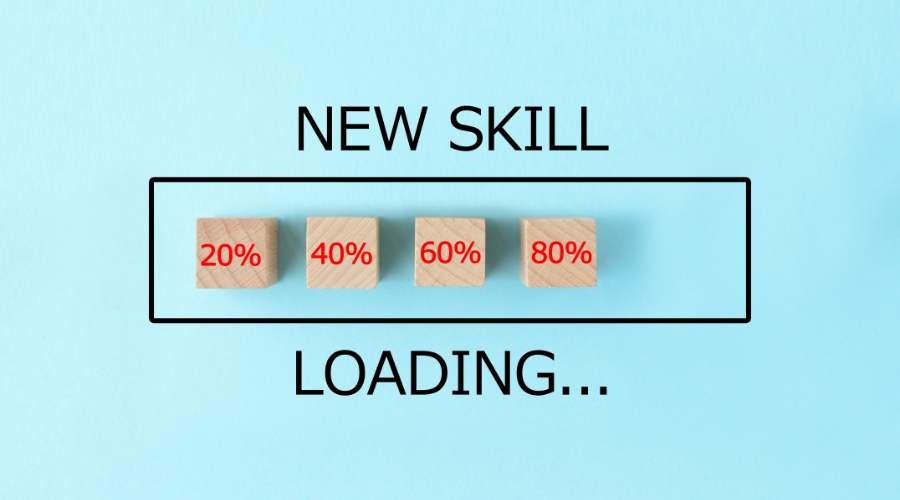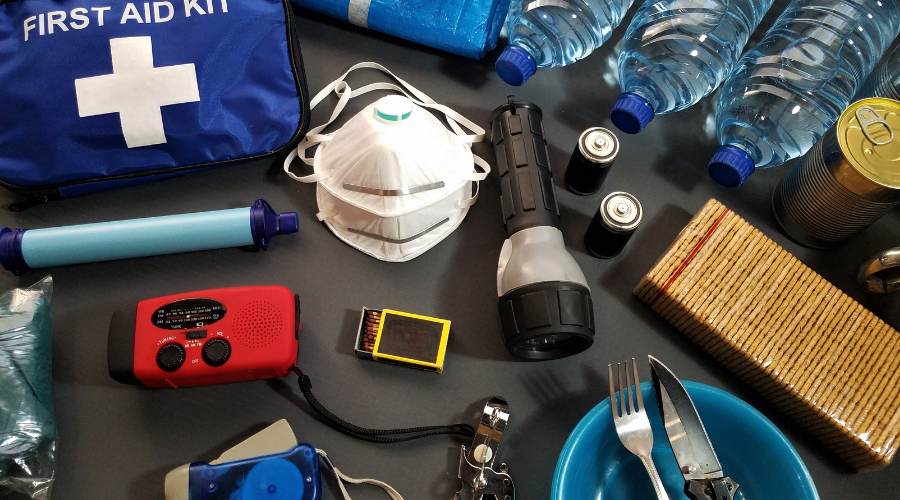Prepping is a term used to describe the process of preparing oneself and one’s family for any potential disaster or emergency situation. This can include natural disasters, such as hurricanes, floods, or earthquakes, power outages, pandemics, or man-made disasters, such as civil unrest, terrorism, or economic collapse. Prepping involves a range of activities, from stockpiling food and water to learning survival skills.
Being prepared for emergencies is crucial to ensure your survival and that of your loved ones. Prepping is not just for doomsday preppers or survivalists. It is a practical approach to ensure you have the necessary resources and knowledge to handle any crisis that comes your way (ready.gov).
If you are wondering how to start prepping, this guide will provide beginners with the essential steps to get started. Although, there are many benefits to prepping some may wonder is being a prepper worth it? see an unbiased perspective.
How do I start Prepping? Here are the steps you need to follow:
- Assess Your Needs
- Create a Plan
- Stock up on Essentials (Food, Water, and More)
- Learn New Survival Skills
- Stay Informed
1. Assess Your Needs Before you Start Prepping
The first step in prepping is to determine your needs and assess risk. This involves identifying the potential risks in your area and assessing your current level of preparedness. You should consider the following:
- What type of natural disaster is most likely to occur in your area?
- How much emergency food and water storage do you currently have on hand?
- Do you have a first aid kit and basic medical supplies?
- Do you have a way to communicate with others in the event of an emergency?
- Do you have a plan for evacuating your home if necessary?
Assessing your needs is the critical first step as a newbie prepper for an emergency. By taking the time to evaluate what you and your family require to survive, you can create a prepping plan tailored to your specific needs. Here are some key points to keep in mind when assessing your needs:

Food and Water
The most crucial resources to have in any emergency are food and water. You should stock up on non-perishable food items that are easy to prepare and have a long shelf life (Use our food storage calculator). Canned goods, dried fruits and nuts, and energy bars are all excellent options (see the best foods for long-term storage). You should also store at least one gallon of water per person daily, for at least two weeks (Use our water storage calculator). Consider investing in a water filtration system as well, so you can have access to clean drinking water in case your food supply runs out (see the best emergency water filters).
Shelter
If you are unable to stay in your home during an emergency, you will need to find shelter elsewhere. This could mean staying with family or friends, or in a designated emergency shelter. It would be a good idea to consider the options available in your area and include them in your emergency plan.
Medical Supplies
Having access to medical supplies can be critical during an emergency. Ensure you have a well-stocked first aid kit that includes bandages, antiseptics, medications, and any other necessary medical supplies. If anyone in your family has a pre-existing medical condition, ensure you have enough medication and supplies to last for at least two weeks.
Personal Hygiene Items
Personal hygiene items such as soap, toothbrushes, toothpaste, and toilet paper may seem insignificant, but they are essential for maintaining good health during an emergency. Stock up on these items and consider investing in a portable toilet or bucket in case access to a functioning bathroom is limited. You can store these items in grab-and-go bags.
Communication and Lighting
During an emergency, communication, and lighting can be critical. Ensure you have a battery-powered radio, flashlight, and extra batteries. You should also consider investing in a solar-powered charger for your cell phone and other devices.
By taking the time to assess your needs, you can create a prepping plan that is tailored to your family’s specific requirements. Remember to update your plan and supplies regularly, as your needs may change over time. With proper planning and preparation, you can increase your chances of surviving an emergency and keeping your family safe.
2. Create a Prepper Plan for Beginners
After assessing your needs, the next step in starting to prep for an emergency is to create a comprehensive plan. A solid prepping plan can help you stay organized and focused, making it easier to react quickly and efficiently in the event of an emergency. Here are some key points to consider when creating your plan:
Establish Communication
Establishing communication is essential during an emergency. Make sure you have a way to communicate with your family members, friends, and emergency services. This can be through a designated meeting place or a communication device such as a two-way radio or cell phone. Make sure everyone knows the plan and how to communicate if separated.
Decide on a Meeting Place
In an emergency, you and your family may not be together. It is crucial to establish a designated meeting place where you can all reunite. Consider a location that is easily accessible and familiar to everyone in the family.
Evacuation Routes
Identify the safest and quickest evacuation routes from your home, workplace, or school. Make sure everyone in your family knows these routes and has a map of the area.
Emergency Contacts
Make a list of emergency contacts such as family members, friends, and emergency services. Keep this list in a safe place and ensure everyone in the family has a copy.
Shelter in Place
In some emergencies, it may be safer to stay indoors rather than evacuate. In these situations, you must have a plan for sheltering in place. Identify a safe room in your home and stock it with supplies, such as food, water, and a first aid kit.
Building a Water and Food Supply Plan
Building a water and food storage plan is essential to any prepping plan. Determine how much food and water you will need for at least a two-week supply for each person in your household (use our food storage calculator).
Choose the right storage containers and rotate your supplies regularly to ensure that your food and water supplies remain fresh and usable. Consider special dietary needs and store a variety of foods that are easy to prepare and have a long shelf life. Also, store water for drinking and sanitation purposes, and invest in a portable water filtration system or water purification tablets.
Practice Your Plan
Once you have created your plan, it is essential to practice it with your family. This will help everyone become familiar with the plan and identify any potential issues. Regularly review and update your plan to ensure it is still relevant and effective.
By creating a solid prepping plan that includes a water and food storage plan, you can increase your chances of staying safe and secure during an emergency. Remember to include all members of your family in the planning process, regularly review and update your plan, and practice it with your family. With proper planning and preparation, you can be confident in your ability to react quickly and efficiently in the event of an emergency.

3. Stock up on Essentials (Emergency Food, Water, and More)
Once you have assessed your needs and created a comprehensive prepping plan, the next step is to stock up on essentials. This includes food, water, and other items that are crucial for survival during an emergency. Here are some key points to consider when stocking up:
Water
Water is essential for survival, and it’s essential to stock up on enough water to last for at least two weeks. Consider storing one gallon of water per person per day for drinking and sanitation purposes (Use our water storage calculator). If you have pets, don’t forget to stock up on water for them too. You can store water in plastic containers, but make sure to rotate your supply every six months (see the best water storage container ideas).
Food
When it comes to food, choose items that have a long shelf life, are easy to prepare, and meet any special dietary needs. Canned foods, dry goods like rice and pasta, and freeze-dried meals are good options (see best foods for long-term storage). Don’t forget to include a manual can opener, and consider investing in a portable camping stove for cooking.
Here are 20 common foods that meet the above criteria and should be included in every prepper’s food storage:
- Canned meat (chicken, tuna, salmon, etc.) (how to store meat long-term)
- Canned fruits and vegetables
- Rice (see how to store rice long-term and its shelf life)
- Beans (dried or canned) (see how to store beans long-term and their shelf life)
- Pasta (see how to store pasta)
- Peanut butter
- Honey
- Powdered milk
- Oats
- Flour and Wheat (consider getting a wheat grinder/grain mill)
- Sugar (see how to store sugar)
- Salt and other spices/seasonings
- Drink Mixes
- Bouillon cubes or soup base
- Beef jerky
- Nuts and seeds (almonds, sunflower seeds, etc.)
- Crackers
- Granola bars, chocolate, or other sweets
- Freeze-dried food/meals (see best freeze-dried foods or consider if buying a home freeze dryer is worth it for you)
- Dehydrated food (see best food dehydrators)
This long-term food provides a good mix of nutrients, can be used to create a variety of meals, and has a long shelf life. When storing these items, be sure to keep them in a cool, dry place and rotate your supply regularly to ensure freshness. Also, consider investing in a portable camping stove or other cooking equipment so that you can prepare your meals during an emergency.
To enhance your preparedness consider learning about these indoor safe emergency cooking solutions without power and also see 8 easy ways to boil water without electricity.
Other Essentials (First Aid Kit and More)
In addition to food and water, there are other essential items that every prepper should include in their emergency supply kit or Survival kit. Here are 20 common non-food items that every prepper should have on hand:
- First aid kit (72-hour kit checklist)
- Prescription medications and medical supplies
- Multi-tool (such as a Swiss Army knife)
- Duct tape
- Paracord or rope
- Lighter or matches
- Flashlight and extra batteries
- Emergency radio (preferably hand-cranked or solar-powered)
- Water filter or purifier
- Emergency blankets and sleeping bags
- Personal hygiene items (toothbrush, soap, toilet paper, etc.)
- Hand sanitizer or disinfectant wipes
- N95 masks or other face coverings
- Protective gloves
- Whistle (for signaling for help)
- Cash (in small denominations)
- Important documents (ID, insurance papers, etc.)
- Maps of the area and a compass
- Spare clothing (appropriate for the climate)
- Portable toilet (such as a camping toilet or portable potty)
These items can help you stay safe, healthy, and comfortable during an emergency. When storing these items, keep them in a secure, waterproof container and rotate your supply regularly to ensure that they remain functional.

Storage
Choose a location for your stockpile that is cool, dry, and secure. Consider using plastic containers or bins with lids to keep your supplies organized and protected. Label each container with its contents and expiration date, and rotate your supplies regularly to ensure freshness.
Put Together a Grab and Go Bag
One important aspect of prepping is having a grab and go bag ready in case of an emergency. This is a bag containing essential items that you can quickly grab in the event that you need to evacuate your home or leave in a hurry. The bag should be lightweight and portable, and contain items such as a first aid kit, water, food, a multi-tool, a flashlight, and extra clothing.
When putting together your grab and go bag, consider your specific needs and the potential risks in your area. For example, if you live in an area prone to natural disasters, you may need to include items like a radio, a whistle, and a map of the area. If you have pets, you’ll want to include food and supplies for them as well.
If you like the quick and easy approach here are some emergency grab and go bags on Amazon. Pick one that works best for you and your needs.
Make sure to keep your grab and go bag in an easily accessible location, such as near the front door, and update it regularly to ensure all items are in good condition and not expired. By taking the time to put together a well-stocked grab and go bag, you can be better prepared for unexpected emergencies.
It is important to have a vehicle that is reliable and can get you were you need to go. We love our Toyota RAV4 because it is reliable and with a small RAV4 lift kit on it, it can easily take us to our off grid cabin if needed. It’s also great for overlanding/camping.
Budget
Stocking up on essentials can be expensive, so it’s essential to budget accordingly (see how to prep on a budget). Make a list of the items you need and prioritize them based on your budget.
Consider buying items in bulk or during sales to save money (see how to save money buying food in bulk). I have found it helpful to shop around and find the best prices for bulk food online. Check out these best places to buy bulk food online at a discount. Also, consider trying these cheapest grocery stores.
By stocking up on essentials like food, water, and other items, you can increase your chances of surviving an emergency. Make sure to choose the right items and store them properly, rotate your supplies regularly, and budget accordingly. With proper planning and preparation, you can be confident in your ability to weather any emergency.
4. Learn New Preparedness and Survival Skills
When it comes to prepping, having the right supplies and equipment is important, but it’s also essential to learn the skills and knowledge needed to use them effectively. Learning new skills can help you become more self-reliant and better equipped to handle emergency situations. Here are some skills that every prepper should consider learning:
- First aid and CPR: Learn basic first aid and CPR so you can help respond to medical emergencies and potentially save lives.
- Preserving and storing food: Learn how to properly preserve and store food so you can extend the shelf life of your food supplies and prevent waste. There are several methods of food preservation, including canning, dehydrating, and freeze-drying.
- Navigation: Understanding how to read a map and use a compass can help you navigate in unfamiliar territory and find your way to safety.
- Self-defense: Knowing how to defend yourself and your family can help you stay safe during an emergency.
- Gardening: Growing your own food can provide a sustainable source of nutrition in a long-term emergency.
- Hunting and fishing: Knowing how to hunt and fish can provide a source of protein in a survival situation.
- Basic car repair: Knowing how to perform basic car repairs can keep your vehicle running in case of an emergency evacuation.
- Knot tying: Understanding different knots and their uses can be helpful in a variety of situations, from securing shelter to tying up your gear.
- Fire starting: Knowing how to start a fire without matches can help you stay warm, cook food, and signal for help.
- Water purification: Knowing how to purify water can provide you with a clean source of drinking water in an emergency. Learn how to purify water at home.
- Foraging: Knowing how to identify edible plants and mushrooms can provide a source of nutrition in a survival situation.
Learn these skills so you can become more self-sufficient and better prepared to handle emergencies. There are many resources available to help you learn these skills, including online tutorials, books, and local classes.
Consider taking a first aid or self-defense class, joining a hunting or fishing club, or practicing your navigation skills in a local park. With practice and preparation, you can become a skilled prepper and be better equipped to handle any emergency situation that may arise.

5. Stay Informed
Staying informed is a critical aspect of prepping. Knowing about potential threats and events can help you prepare more effectively and take appropriate actions when necessary. There are several ways to stay informed, including:
- News sources: Keeping up with the news is important to stay aware of any events or situations that may impact your community or prepping efforts. Consider subscribing to local news sources as well as national news outlets to stay informed about current events.
- Emergency alerts: Sign up for emergency alerts from your local government or emergency management agency. These alerts can provide important information about severe weather, natural disasters, and other emergencies that may require immediate action.
- Social media: Following reputable sources on social media can provide quick updates and important information about ongoing events. However, be cautious about relying solely on social media for news and information, as it can sometimes be inaccurate or misleading.
- Networking: Building a network of other preppers and like-minded individuals can provide valuable information and resources. Joining online prepper communities or attending local meetings and events can help you connect with others and share information.
By staying informed, you can better understand potential threats and events and take the necessary steps to prepare and protect yourself and your family. When prepping remember to always verify information from multiple sources and to stay calm and level-headed during times of crisis.
Frequently Asked Questions (FAQs)
Q: What should a prepper buy first?
A: When starting to prep, it’s important to focus on the essentials first. This includes food, water, and shelter. Begin by stocking up on non-perishable foods with a long shelf life, such as canned goods, rice, and dried beans. Next, ensure you have a sufficient supply of clean drinking water. Finally, make sure you have adequate shelter, such as a tent or emergency shelter-in-place kit.
Q: What do preppers often forget?
A: While preppers tend to be very thorough in their preparations, there are a few things that can be overlooked. One common mistake is forgetting to rotate their food and water supplies. It’s important to regularly check expiration dates and replace any expired items. Another often overlooked item is a comprehensive first aid kit, which should include items like bandages, antiseptics, and pain relievers.
Q: What is the first stage of prepping?
A: The first stage of prepping is assessment. This involves evaluating your needs and identifying potential threats and risks. It’s important to take into account factors such as location, climate, and the availability of resources. Once you have a clear understanding of your needs and potential risks, you can begin to create a plan and stock up on the necessary supplies. Remember to regularly assess and update your prepping efforts as needed.
Q. What should I include in my emergency kit?
A. Your emergency kit should include food, water, medical supplies, a first aid kit, a flashlight, a radio, extra batteries, and personal hygiene items. See our car emergency kit checklist.
Q. How often should I update my emergency kit?
A. You should update your emergency kit at least once a year. Check the expiration dates of food, water, and medical supplies and replace them as needed.
Q. What should I do if I have pets?
A. Include your pets in your emergency plan. Stock up on their food, water, and any medications they need. Ensure they have identification and are comfortable with carriers.
Conclusion
Emergencies can happen at any time, and being prepared is essential for your safety and that of your family. Starting prepping may seem overwhelming at first, but by following the steps in this guide, you can begin your journey to emergency preparedness.
Remember, prepping is not about fear, but rather about being proactive and ensuring you have the necessary resources and knowledge to handle any situation that comes your way. So, How do I start Prepping? Follow the steps in this guide, and you will be on your way to being prepared for any crisis.

